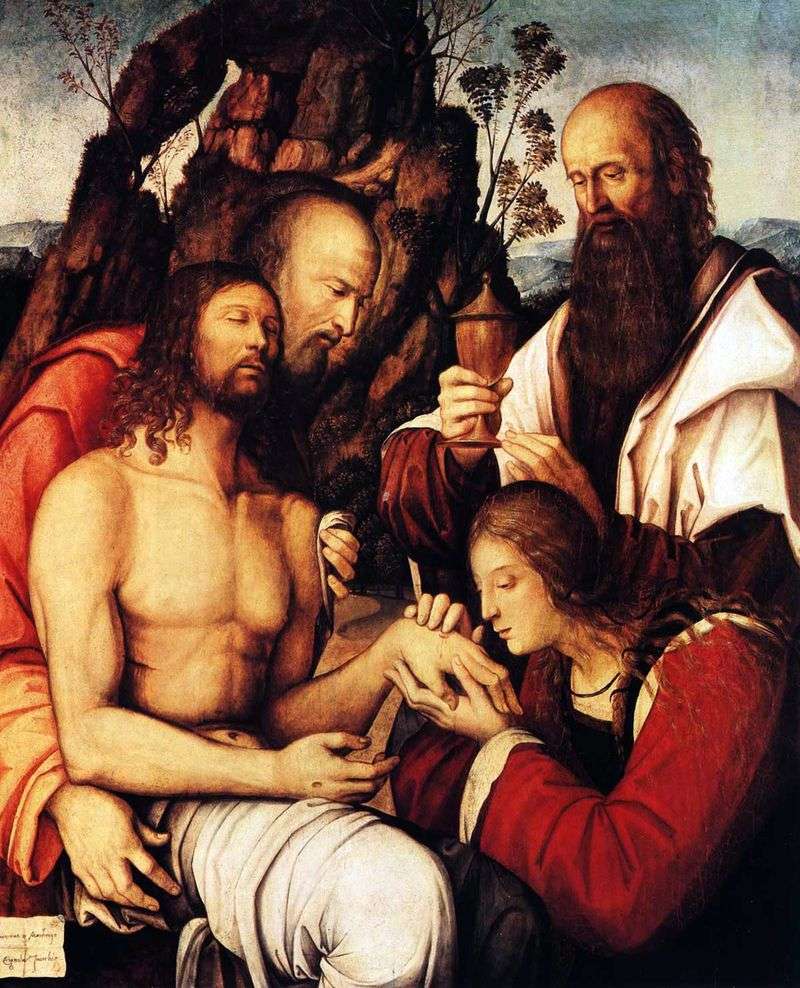
Acquired from the collection of Esterházy in 1870. Markesi was eclectic. In his works, the influence of Francesco Franci, Marco Palmezzano and Raphael is felt. However, the greatest influence on him had another Cotignol artist – Francesco Zaganelli, who loved the decorative effect of draperies. One of Zahanelli’s works – a fragment of the altar painting – is kept in the Museum of Fine Arts in Budapest. Markesi worked in many cities in Bologna, Rimini, in the cities of Romagna, Rome and Naples.
As a result of the eclecticism of Markesi’s work, it is difficult to arrange his works in chronological order. It can only be established that in his later works the influence of Raphael and Umbrian masters is more strongly felt. On the Budapest board, some details, especially the image of hair, are still reminiscent of Francesco Zaganelli. With this picture is another similar work of Marchesi – “Christ Bearing the Cross” – located in the Louvre and dated 1520 is very similar. Probably, the Budapest picture was written at the same time.
Similar compositions are repeatedly encountered in the circle of artists belonging to the Romagna school. For the first time such a composition was created by Giovanni Bellini in his painting on a similar theme, written by him in 1475-1480 on the pediment of the altar of the church of San Francesco in Pesaro. But if the composition of Bellini, seen by the spectators from below, produces a deep dramatic impression, then the picture of Marchesi, although conveying a certain bitter compassion, in effect, does not produce the proper impact, does not capture the viewer.
The huge towering figure of Nicodemus in the picture of Bellini here is lost in the composition. The landscape in the background, which Bellini had neutral, was not conspicuous, in the painting of Markesi, as a result of a detailed, too detailed depiction of nature, distracts attention, absorbs contours, and the strength of expressiveness of monumental forms is greatly weakened and lost.
In all the other numerous variants repeating the composition of Bellini, too, there is not that perspective image intended for viewing the picture from below, which would make it impressive; apparently all of them were written with the expectation that they would be located low. The Budapest painting is equipped with a signature, which is on a piece of paper, the so-called “cartellino”, in the lower left corner: Jieronimus De Marehesys De Cotignola Faclebat.
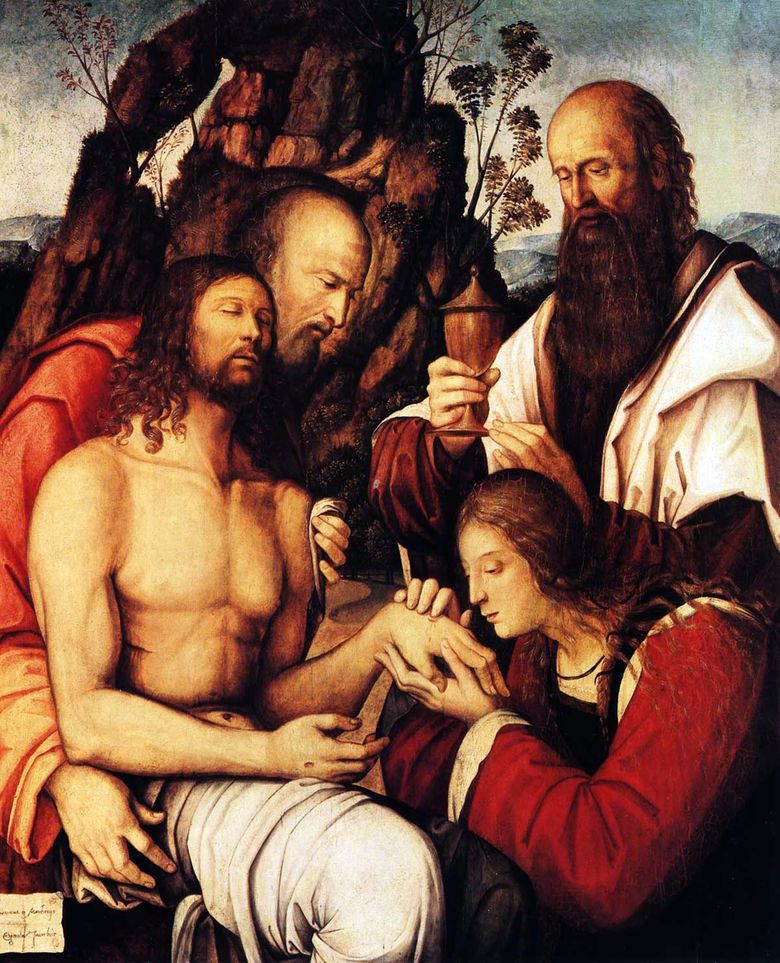 Deuil du Christ – Girolamo Marchesi da Cotignola
Deuil du Christ – Girolamo Marchesi da Cotignola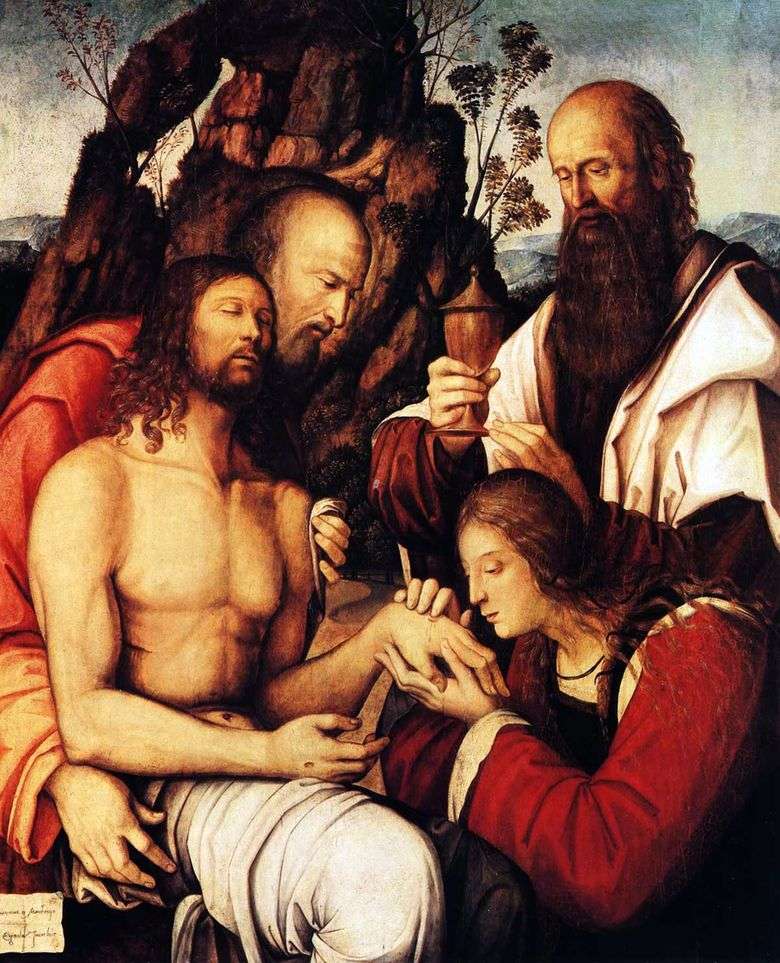 Lamentación de Cristo – Girolamo Marchesi da Cotignola
Lamentación de Cristo – Girolamo Marchesi da Cotignola Lamentation of Christ by Marco Martial
Lamentation of Christ by Marco Martial Lamentation of Christ by Giovanni Bellini
Lamentation of Christ by Giovanni Bellini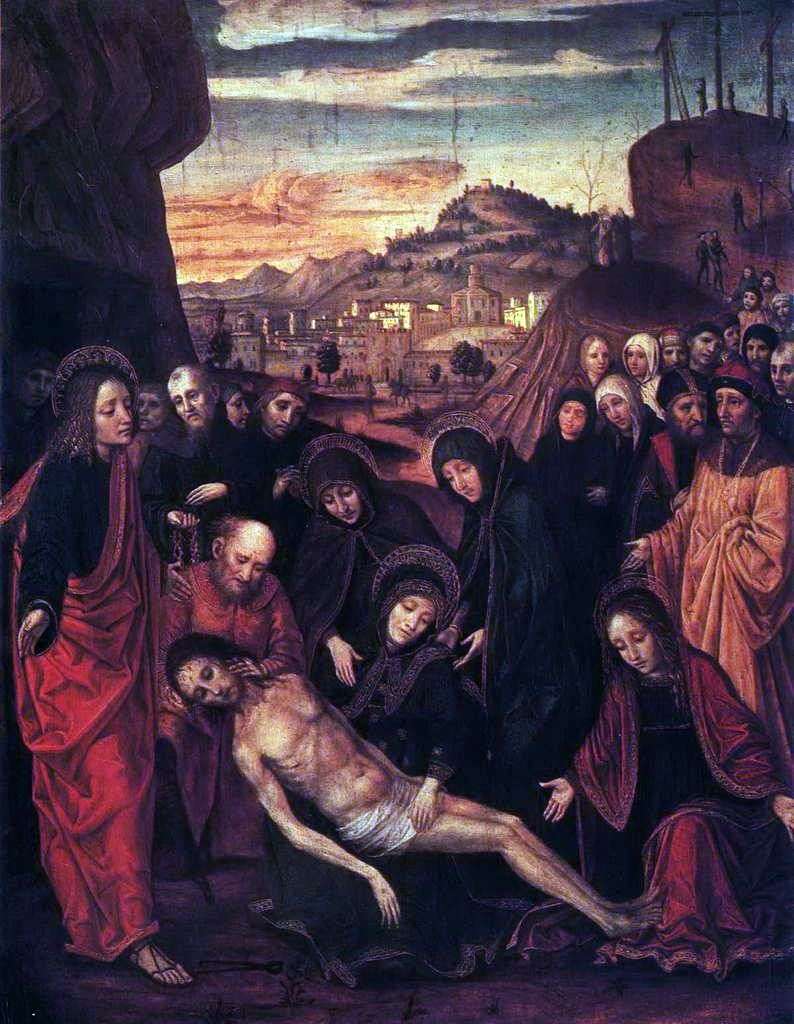 The Lamentation of Christ by Bergognone (Ambrogio da Fossano)
The Lamentation of Christ by Bergognone (Ambrogio da Fossano)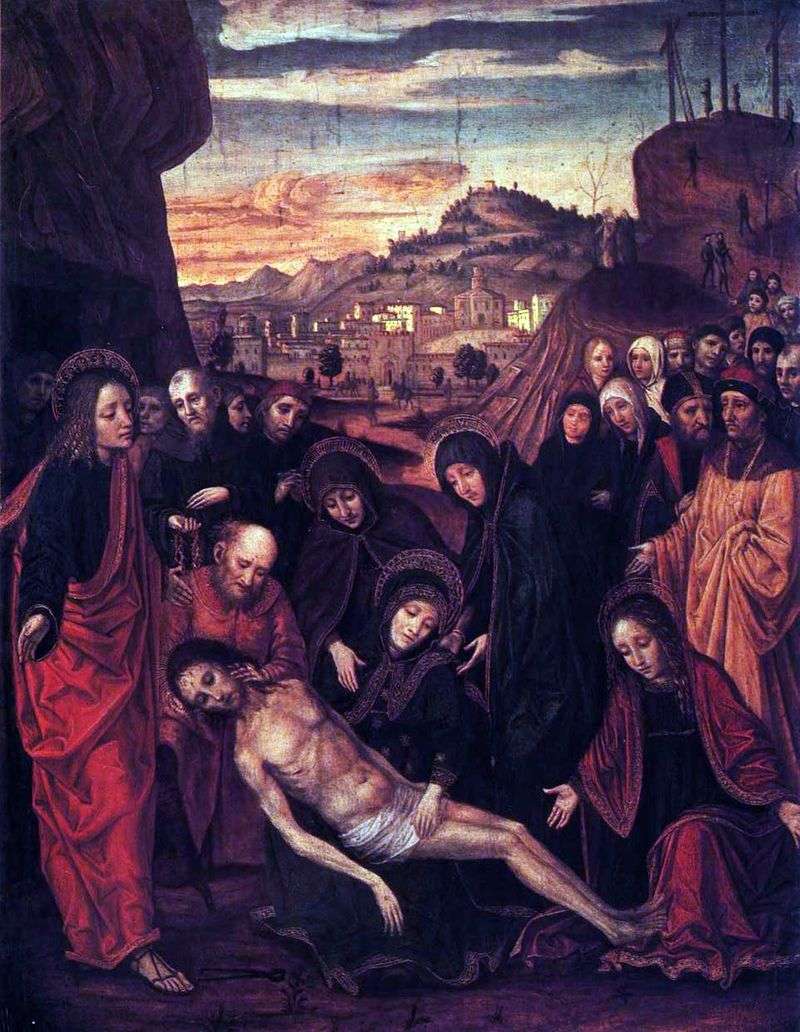 Lamentation of Christ by Ambrogio Borghonne
Lamentation of Christ by Ambrogio Borghonne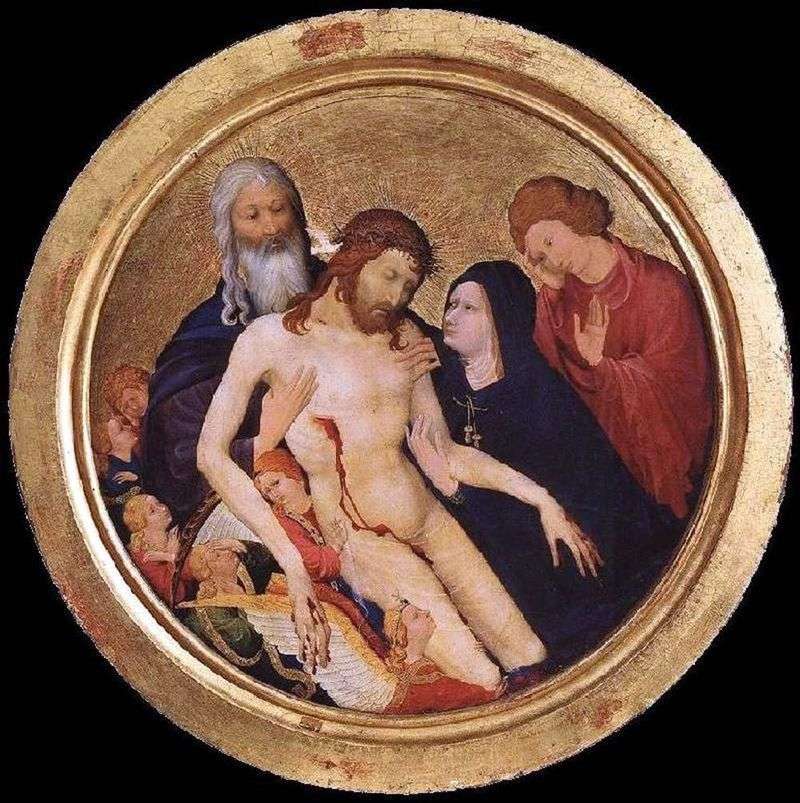 Lamentation of Christ by Jean Maluel
Lamentation of Christ by Jean Maluel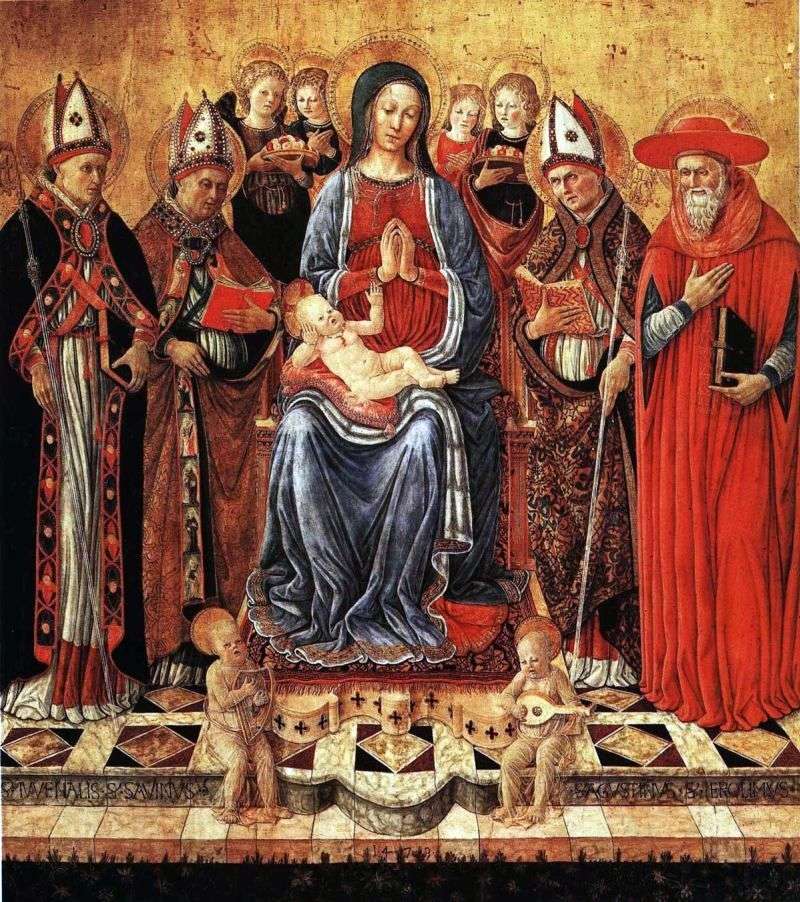 Maria and the baby on the throne, surrounded by the saints Juvenal, Sabina, Augustine, Jerome and six angels by Giovanni Boccati
Maria and the baby on the throne, surrounded by the saints Juvenal, Sabina, Augustine, Jerome and six angels by Giovanni Boccati